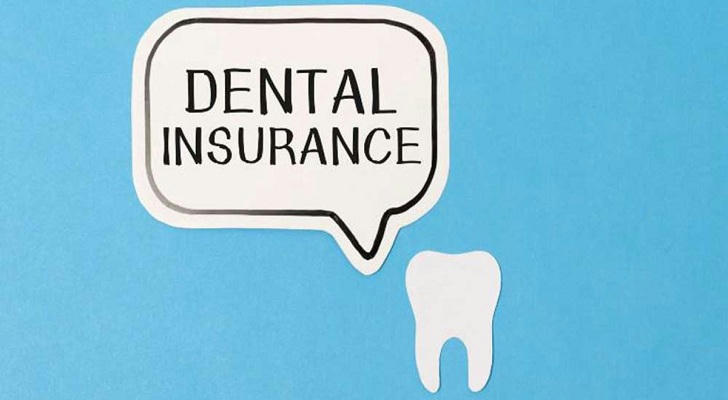Dental Insurance Explained: Your Guide to Affordable Oral Health Care
Discover how dental insurance works, its benefits, and how to choose the best plan for your needs. Learn about coverage options, costs, and tips to maximize your dental insurance for a healthier smile.

Introduction to Dental Insurance
Dental insurance is a type of health coverage designed to help individuals and families manage the costs of dental care. From routine cleanings to major procedures, dental insurance ensures that maintaining oral health doesn’t break the bank. With rising dental care costs, having the right insurance plan can make a significant difference in both your oral health and your wallet.
Why Dental Insurance Matters
Oral health is a critical component of overall well-being, yet many people avoid dental visits due to high costs. Dental insurance addresses this issue by:
Reducing Out-of-Pocket Costs: Insurance covers a portion of dental expenses, making care more affordable.
Encouraging Preventive Care: Most plans cover routine check-ups and cleanings, helping you avoid costly treatments later.
Providing Financial Security: Dental emergencies can be expensive, but insurance ensures you’re prepared for unexpected costs.
Improving Access to Care: With insurance, you’re more likely to visit the dentist regularly, ensuring early detection of issues.
Types of Dental Insurance Plans
Dental insurance plans vary in structure and benefits. Here’s a breakdown of the most common types:
1. Dental Health Maintenance Organization (DHMO)
How It Works: You choose a primary dentist from a network and pay fixed copayments for services.
Pros: Low premiums, no deductibles, and predictable costs.
Cons: Limited to network providers; no coverage for out-of-network care.
2. Preferred Provider Organization (PPO)
How It Works: You can visit any dentist, but staying in-network saves money. Plans often have deductibles and annual maximums.
Pros: Greater flexibility in choosing dentists; coverage for a wide range of services.
Cons: Higher premiums and out-of-pocket costs compared to DHMOs.
3. Indemnity Plans (Fee-for-Service)
How It Works: You pay for services upfront and submit claims for reimbursement. No network restrictions.
Pros: Freedom to choose any dentist; no referrals needed.
Cons: Higher premiums and deductibles; more paperwork.
4. Discount Dental Plans
How It Works: Not insurance, but provides discounts on dental services at participating providers for an annual fee.
Pros: Affordable alternative to traditional insurance; no deductibles or waiting periods.
Cons: Limited to participating providers; no coverage for major procedures.
What Does Dental Insurance Cover?
Dental insurance typically categorizes coverage into three levels:
1. Preventive Care
Coverage: 100% or close to it.
Services: Routine cleanings, exams, X-rays, and fluoride treatments.
2. Basic Procedures
Coverage: 70-80%.
Services: Fillings, extractions, root canals, and periodontal treatments.
3. Major Procedures
Coverage: 50% or less.
Services: Crowns, bridges, dentures, and orthodontics (braces).
What’s Not Covered by Dental Insurance?
While dental insurance covers many services, there are common exclusions:
Cosmetic Procedures: Teeth whitening, veneers, and other aesthetic treatments.
Pre-Existing Conditions: Some plans exclude coverage for conditions present before enrollment.
Experimental Treatments: New or unproven dental procedures.
Annual Maximums: Most plans cap benefits at $1,000-$2,000 per year.
How to Choose the Right Dental Insurance Plan
Selecting the right plan requires careful consideration. Follow these steps:
1. Assess Your Needs
- Consider your oral health history, frequency of dental visits, and any upcoming treatments.
2. Compare Plans
Look at premiums, deductibles, copayments, and annual maximums.
Check if your preferred dentist is in-network.
3. Understand Waiting Periods
- Some plans require waiting periods for major procedures. Choose a plan with no or short waiting periods if you need immediate care.
4. Read Reviews
- Research customer feedback to gauge the insurer’s reliability and customer service.
Top Dental Insurance Providers in the U.S.
Here are some of the leading dental insurance companies:
1. Delta Dental
Largest provider with extensive network coverage.
Offers a variety of plans for individuals and families.
2. Cigna
Affordable PPO plans with no waiting periods for preventive care.
Strong customer service reputation.
3. MetLife
Flexible plans for individuals and groups.
Wide network of dentists.
4. Guardian
Comprehensive coverage options.
High customer satisfaction ratings.
5. Humana
Affordable DHMO and PPO plans.
Additional discounts on vision and hearing services.

How to Use Your Dental Insurance
Using dental insurance is simple:
Choose a Plan: Select a plan that fits your needs and budget.
Visit a Dentist: Schedule an appointment with an in-network provider (if applicable).
Pay Your Share: Pay any copayments or deductibles at the time of service.
Submit Claims: For indemnity plans, submit claims for reimbursement.
Track Benefits: Monitor your annual maximum and remaining benefits.
Tips for Maximizing Your Dental Insurance
Schedule Regular Check-Ups: Take advantage of covered preventive care to avoid costly treatments.
Stay In-Network: Save money by using in-network providers for PPO and DHMO plans.
Plan Ahead: Schedule major procedures early in the year to maximize annual benefits.
Understand Your Plan: Know your coverage limits, exclusions, and waiting periods.
Conclusion
Dental insurance is a smart investment for maintaining oral health and managing dental care costs. By understanding the types of plans, coverage options, and how to choose the right policy, you can ensure that you and your family receive the care you need without financial stress. Don’t wait—explore your dental insurance options today and protect your smile for years to come.
